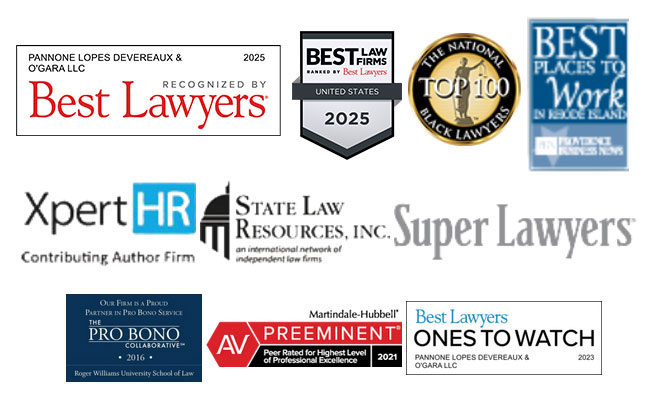Industry Spotlight: Challenges in the Construction Industry
By Gary R. Pannone
 The barriers to entry in the construction business are relatively low, which has created a crowded marketplace. The more competition that exists, the more difficult it becomes to sustain strong margins that can often result in less available resources to reinvest in new technology – a critical factor to long-term sustainability. Sustaining high productivity levels is challenging in all businesses; however, it appears even more difficult in the commercial construction business. Developing a comfortable backlog of new jobs is the lifeblood for construction companies. There are many other daily challenges that require attention in order to remain a viable enterprise long term. A strong economy often leads to a shortage of skilled laborers in each of the trades, which creates a strain that is not easily overcome in the construction business. Retaining competent managers to train the next generation of high performers is sometimes as challenging as finding new project work.
The barriers to entry in the construction business are relatively low, which has created a crowded marketplace. The more competition that exists, the more difficult it becomes to sustain strong margins that can often result in less available resources to reinvest in new technology – a critical factor to long-term sustainability. Sustaining high productivity levels is challenging in all businesses; however, it appears even more difficult in the commercial construction business. Developing a comfortable backlog of new jobs is the lifeblood for construction companies. There are many other daily challenges that require attention in order to remain a viable enterprise long term. A strong economy often leads to a shortage of skilled laborers in each of the trades, which creates a strain that is not easily overcome in the construction business. Retaining competent managers to train the next generation of high performers is sometimes as challenging as finding new project work.
According to a Construction Owners Association of America study, 63 percent of direct labor time on large construction projects is spent either waiting for materials and equipment, traveling to the area, taking early breaks or planning how to do the work. This lack of productivity is reflected in the bottom line and negatively impacts the opportunity for reinvestment. The margins on large projects are typically lower, which makes the use of technology especially important in the attempt to maintain some level of profitability.
Design complexity is a growing challenge for the small to medium size construction company in that a higher level of efficiency is required to maintain the margin on a large project. According to a study by Accenture, only 15 percent of projects are completed on time and under budget. Underperforming projects, delays and lack of manpower make it more difficult to maintain margins that allow for reinvestment.
Another challenge is finding skilled laborers, supervisors, estimators and engineers, which sometimes outpaces the project opportunities. What was a two-generation workforce has now become a four-generation workforce consisting of traditionalists, baby boomers, generation X, and millennials. This presents a palpable difference in work ethic, attitude and behavior, which is challenging the ability of the traditionalists and baby boomers to sustain a highly productive company environment. The combination of increasing project complexity and decreasing experience is a risk multiplier, increasing the risk of deliverable delays, quality construction problems, and employee safety concerns.
Changing a strategy usually involves disruption. In the construction industry, the disruption relates to preparing for the digital future in order to remain sustainable. The industry will always be challenged with managing profitability, productivity, project performance and finding skilled labor, all of which are essential to remaining viable. The adoption of best practices is critical, and the effective use of technology is important to maintain high levels of productivity, eliminate waste, and mitigate the adverse impact of on-site surprises.
Establishing a competitive employee incentive plan is an important step to long-term viability in a competitive marketplace. Educating the employees on what is needed to sustain profitability creates an incentive for high performers to be engaged in the overall success of the company, as opposed to being singularly focused on pay increases.
Another challenge for the owner is making certain that a sound succession plan has been developed in order to avoid disruption to the management team when an event occurs. Creating, evaluating and reviewing the company’s succession plan should be an annual exercise so that key employees understand and appreciate its importance. If the owner(s) do not have a viable plan to address death, disability or withdrawal of a key person to the enterprise the damage could be irreparable. Anticipating key events should include: (i) generational transfer; (ii) key employee buyout; (iii) employee stock ownership plan, and (iv) external sale. All options should be discussed with financial and legal advisors in order to develop a workable strategy that is easily implemented in the event of an unanticipated life event.
In December 2017, the largest tax overhaul seen since the Reagan administration was passed. Owners should be consulting with their tax experts routinely in order to address potential increases in taxable income by maximizing deduction decisions on items such as entity structure, method of accounting for tax purposes, and owner payroll. Proper planning should be addressed each year.
Technology improvements have also increased security risks that could result in loss of business, confidential data, and can be time-consuming and costly. Investing in understanding the cyber risks to your company is imperative. Working with qualified IT consultants to develop and maintain cybersecurity will reduce the potential for loss.
Understanding and implementing best practices for the construction industry is not a luxury and must be taken seriously to preserve enterprise value. Trusting your advisors on these and other issues is a key component to any company’s success. Successful construction companies manage challenges rather than react to them. Ultimately, this approach delivers successful projects and increased profits. For more information about the construction industry and related business and legal issues, please contact PLDO Managing Principal Gary R. Pannone at 401-855-2601 or email gpannone@pldolaw.com.
Published by Gary R. Pannone, Managing Principal

Gary R. Pannone
Managing Principal
Gary R. Pannone is the Managing Principal of Pannone Lopes Devereaux & O’Gara LLC. He has been representing closely held business owners for 30 years, specializing in the areas of business formations, corporate restructuring, mergers and acquisitions and corporate compliance. Attorney Pannone’s practice also includes the representation of nonprofit organizations with respect to consolidations and mergers and acquisitions, and he serves on several boards and governance committees of nonprofit agencies. He is a frequent lecturer and published author in the areas of corporate compliance, board governance and best practices.
Search Our Advisories
Knowledge Library
Practice Areas
Receive Our E-News

Client Review
“What is extremely unique about PLDO is that they are great lawyers who actually care about me and my business. They make me feel as if I am the most important client in the firm and I am certain that all of their clients feel the same way. ”
President, The Droitcour Company

